Primary tabs
Faculty Mentors
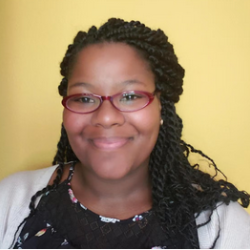
Karen Bailey
Dr. Karen Bailey is an Assistant Professor in the Environmental Studies Program at the University of Colorado Boulder. She is a systems researcher interested in understanding how human-environment interactions impact human health and well-being and natural resources. Her work is focused in conservation landscapes and climate-vulnerable communities in Southern and East Africa and she is interested in sustainable livelihoods, wildlife conservation, global change, and coupled human natural systems. She also has a strong commitment to justice, equity, diversity, and inclusion (JEDI) in environmental work and STEM more broadly.
- Teddy McCormack ( RECCS cohort 2025 )
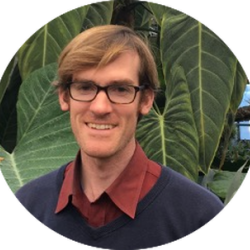
Andrew Blakney
Andrew is a Postdoc at CIRES in the Fierer Lab. His research has focused on plant-soil-microbial interactions in agriculture, using in-lab tests, and molecular and genetic tools. Some previous research questions include, what genes are responsible for plant-growth promotion in bacteria?, how do crop rotations impact bacterial communities?, and can biosolid waste be used as a safe agricultural fertilizer?
- Emma Vencer ( RECCS cohort 2025 )
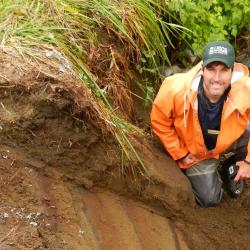
Rich Briggs
Rich Briggs is a research geologist at USGS. His work focuses on the geology and seismotectonics of large earthquakes, with the goal of understanding how, where, and why they happen. He characterizes active faults for seismic hazard analysis which requires grappling with structures and processes that control earthquakes. He also works with the USGS National Earthquake Information Center (NEIC) to respond to large earthquakes by conducting rapid field studies and analyzing remote sensing products.
- Chloe Rampersad ( RECCS cohort 2025 )
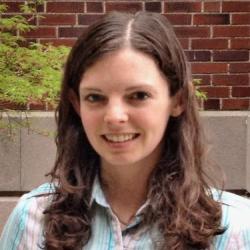
Ellie Browne
My group is primarily interested in developing instrumentation for measuring gases and aerosols in the atmosphere and in using this instrumentation to investigate how atmospheric processing affects the chemical composition of gases and aerosols. The group is specifically interested in organonitrogen and organosilicon compounds and investigates the fate of these compounds using laboratory and field measurements. Current work focuses on understanding the role of organonitrogen in new particle formation and growth, and in nitrogen deposition.
- Karla Lemus ( RECCS cohort 2022 )
- Uriel Aguilar Gutierrez ( RECCS cohort 2025 )
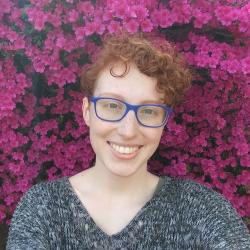
Bri Dobson
Bri Dobson's current research focuses on nitrogen-containing compounds and new particle formation and growth in the atmosphere. They are using L-TOF-CIMS measurements taken at the Southern Great Plains site in rural Oklahoma to obtain quantitative measurements of amines in the region. They are also interested in the vertical distribution of particle nucleation within the planetary boundary layer at this site.
- Karla Lemus ( RECCS cohort 2022 )
- Uriel Aguilar Gutierrez ( RECCS cohort 2025 )
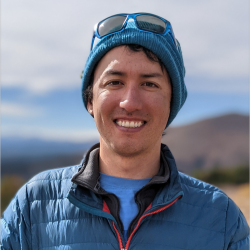
Nicholas Dragone
Nick is a Postdoc at CIRES in the Fierer Lab. His research focus on using genomics techniques to study the how organisms survive in challenging environments, mainly Antarctic soils and volcanic systems. Prior to arriving at CU Boulder, Nick worked as a marine biologist studying microplastic trash in the Pacific Ocean.
- Noah Mendez ( RECCS cohort 2024 )
- Emma Vencer ( RECCS cohort 2025 )
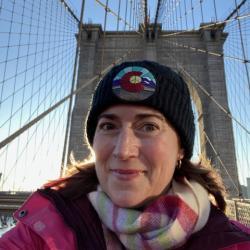
Amy Dunbar-Wallis
Since completing a B.S. in Environmental and Forest Biology from the State University of New York, College of Environmental Science and Forestry, Amy has had the pleasure of working as a research assistant with many exciting plant science labs across the country. This work has allowed her to explore mycorrhizal structures in loblolly pine, breeding system studies in native Hawaiian flora, and flower color evolution with fantastic scientists and educators. More recently, she has worked with the Boulder Apple Tree Project as a project coordinator. In this capacity she has been able to work with students, researchers, and community members towards a goal of mapping and measuring the apple trees of Boulder County and beyond. Her research interests include expanding course-based undergraduate research experiences into community college classrooms, engaging those students with community members through long-term studies of local trees, and professional development for community college professors to encourage research in their institutions. Outside of research she can be found running (loves the NYC marathon!), reading, baking (so much baking), and tagging along on her kids' adventures (marching band, comic con, penguins, travel). Her husband and her are preparing to be empty nesters and hope to kayak (new to them!) in beautiful places (that will also be new to them!).
- Hannah Bell ( RECCS cohort 2025 )
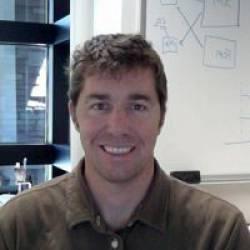
Noah Fierer
Microbial ecology. Terrestrial ecosystem ecology. Microbial biogeography. Impact of global change factors on microbial communities and processes.
- Danny De Souza ( RECCS cohort 2021 )
- Savanna Pierce ( RECCS cohort 2019 )
- Cora Rutledge ( RECCS cohort 2018 )
- Scott-Wesley Bean ( RECCS cohort 2016 )
- Caihong VanderBurgh ( RECCS cohort 2015 )
- Patrick Marsden ( RECCS cohort 2014 )
- Julissa Rubio Soto ( RECCS cohort 2022 )
- Noah Mendez ( RECCS cohort 2024 )
- Chloe Rampersad ( RECCS cohort 2025 )
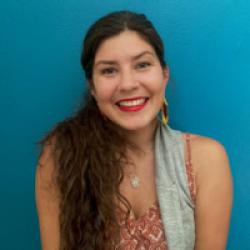
Emma Galofré García
Emma (she/they) is a 4th year graduate student in the Department of Environmental Studies at CU Boulder. Emma's dissertation research utilizes meta-analyses, spatial modeling, and field methods to study bison ecology and conservation with an emphasis on implications for Colorado and the management of spatially restricted herds. Emma approaches her work through a critical, anti-colonial, and feminist lens, which informs her research approach and relationships. Emma also actively works towards equity in the outdoors, serving as an individual member of Next 100 Colorado and as an Outings Leader with Latino Outdoors.
Emma holds a BS in Wildlife Ecology and Conservation (Sea Bird Oceanography Lab) and a Master's in Public Policy (Family Forest Research Center) from UMass Amherst. With over a decade of experience in conservation, Emma has worked on projects domestically and abroad with an array of bird and mammal species in various habitats and with diverse human communities. Emma's academic interests span wildlife and plant ecology, conservation law, policy, and management, and critical and Indigenous studies.
- Teddy McCormack ( RECCS cohort 2025 )
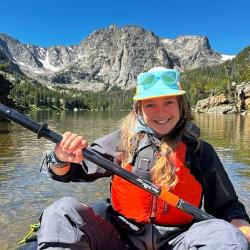
Katie Gannon
Katie Gannon is a PhD student. She is studying how greenhouse gases (carbon dioxide and methane) are produced, stored, and emitted from alpine lakes. She is particularly interested in how these processes are impacted by glacial inputs and changes in winter ice cover. When she is not doing science, you can find her trail running, reading books, and saying hello to every dog she sees.
- Paulina Guzman Tinoco ( RECCS cohort 2025 )

Alex Hatem
Alex Hatem is a research geologist at USGS. Her research is focused on how to best describe the behavior of active faults in the recent past. She uses methods such as paleoseismology, slip rate studies, topographic analysis, numerical modeling and tectonic reconstructions to understand how earthquakes occur in space and time, both on single faults and within larger fault systems. Overall, she is interested in how faults evolve over time and characterizing variability and evolution of fault behavior on across different space-time scales. An overarching goal of her work is to understand how to represent geological constraints within hazard models, like the National Seismic Hazard Map and the Uniform California Earthquake Rupture Forecast.
- Chloe Rampersad ( RECCS cohort 2025 )
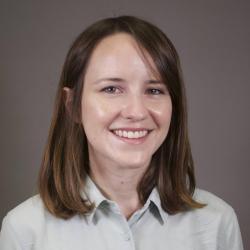
Nicole Hemming-Schroeder
Nicole is a postdoctoral associate in the Earth Lab where she researches wildfire behavior and risks to communities in Colorado using wildfire models and satellite data. She has a Ph.D. in Earth System Science from the University of California, Irvine, where she studied methods for mapping individual tree mortality in the Sierra Nevada ecoregion of California using high-resolution lidar and multispectral imagery from the National Ecological Observatory Network. She also used machine learning to link individual tree mortality from drought and bark beetle outbreak to the Landsat time series. In addition, she has an M.A. in Applied Mathematics from California State University, Fullerton, a B.S. in Atmospheric and Oceanic Sciences from the University of Wisconsin, Madison, and a mathematics teaching credential. Nicole is interested in education, geospatial analysis, and climate impacts on ecosystems and people.
- Bradley Harz ( RECCS cohort 2025 )

Jonathan Henn
I am a Postdoctoral Researcher working with Marko Spasojevic and Katie Suding to characterize long-term change in alpine plant communities. Previously, I was a Postdoc with Anne Bjorkman at the University of Gothenburg on arctic plant responses and adaptation to climate change. I completed my PhD at the University of Wisconsin-Madison in the Damschen Lab. I studied how functional traits can help explain plant responses to factors like climate change, species invasions, and changing disturbance regimes. Overall, my research focuses on these issues to improve the restoration and management of ecosystems under rapidly changing conditions. In addition to doing research, I actively work on developing effective mentoring, teaching, and outreach skills because I believe that scientists need to be effective mentors, teachers, and communicators to help cultivate the next generation of scientists and engaged citizens.
- Alexandra Emond ( RECCS cohort 2022 )
- Caelan Sullivan ( RECCS cohort 2024 )
- Katherine Hoerauf ( RECCS cohort 2025 )

Alexandra Jahn
Alexandra Jahn is an Associate Professor in the Department of Atmospheric and Oceanic Sciences and Fellow of the Institute of Arctic and Alpine Research. Alexandra likes everything to do with snow and ice, at work and in her free time. She is originally from Germany, where she studied Meteorology and earned a Masters degree, studying the climate of the past using models. Alexandra then earned a PhD in Atmospheric and Oceanic Sciences in Atmospheric and Oceanic Sciences from McGill University in Canada, studying the dynamics affecting the pathway of freshwater entering the Arctic Ocean. For her postdoctoral work, she studied Arctic sea ice projections at the National Center for Atmospheric Research (NCAR) in Boulder, CO, USA. She then returned to Paleoclimate research, to implement Carbon Isotopes into the ocean model of a climate model at NCAR. In 2015, she joined the University of Colorado as Assistant Professor, founding the Polar and Paleoclimate Modeling group.
- Cece Weaver ( RECCS cohort 2025 )

Manuela Mejia
Manuela is originally from Medellin, Colombia (City of Eternal Spring), and moved to Colorado in 2012. She received her BA degree in 2017 from the University of Colorado Boulder (Go BUFF!) with a double major in Ecology & Evolutionary Biology and Spanish Language & Literature. During her undergrad, she worked on two different research projects: Exploring how insect phenology may influence the fitness of the Mountain Blue Bird; and isotope analysis to understand how fragmentation alters food-web structure in a large-scale, long-term fragmentation experiment in southeastern Australia.
She completed her master's in biology from Miami University (OH) in 2021 with an emphasis on inquiry-driven education, environmental stewardship, and global understanding through firsthand experiences abroad. For her Ph.D. work, she is particularly interested in biological curriculum design through equitable and diverse knowledge, as well as the development of early scientists and the experiences that led them into the STEM field
- Hannah Bell ( RECCS cohort 2025 )
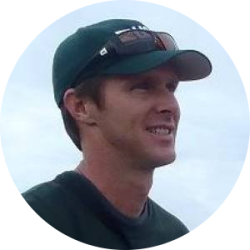
Toby Minear
Dr. Minear completed his undergraduate degree at Colorado College and later received Masters and PhD degrees from the University of California, Berkeley. Before joining CIRES, Dr. Minear worked as a Research Hydrologist at the United States Geological Survey at the California Water Science Center and the National Research Program. Dr. Minear works on a variety of river research and hydrodynamic modeling projects in California and the Western U.S., including the San Joaquin River, Trinity River, Klamath River, Merced River in Yosemite National Park, and Elwha River Dam Removal Project. Dr. Minear is a Science Team and Cal/Val Team member for the upcoming NASA Surface Water and Ocean Topography (SWOT) Mission and serves on the U.S. Subcommittee on Sedimentation.
- Marie Lim ( RECCS cohort 2021 )
- Aislynn Connell ( RECCS cohort 2021 )
- Alex Marquez ( RECCS cohort 2025 )
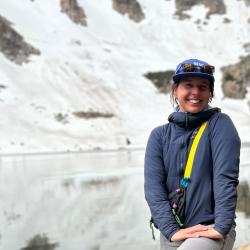
Bella Oleksy
Bella Oleksy is the PI for the Mountain Luminology Lab. She is an ecosystem scientist, biogeochemist, and life-long learner. She uses mountain lakes as a natural laboratory to better understand how lakes more broadly "work." She is passionate about open science and open data! When she is not doing science, you can find her riding her bike, gardening, playing in the mountains, or seeing live music.
- Paulina Guzman Tinoco ( RECCS cohort 2025 )
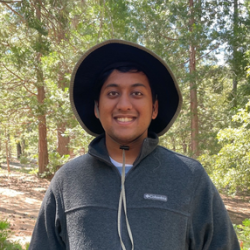
Advyth Ramachandran
Advyth is a PhD Student at CU Boulder in the Department of Ecology & Evolutionary Biology. He received his B.S. in Biology from UC Riverside. His research interests span fire ecology, plant community ecology, ecosystem ecology, urban ecology, and restoration ecology. He is also passionate about natural history and science policy. Additionally, he is broadly interested in links between plant communities and ecosystem processes, with a particular focus on applying ecological theory to land restoration and nature-based solutions.
- Katherine Hoerauf ( RECCS cohort 2025 )

Abby Ross
Abby Ross is a PhD student. She is a biogeochemist and microbiologist interested in nutrient cycles and microbial community dynamics in alpine lakes. Her previous work centered around the distribution and regulation of harmful algal bloom toxins in lakes. If she is not in the lab or doing fieldwork, you can probably find her hiking, cooking, or reading!
- Paulina Guzman Tinoco ( RECCS cohort 2025 )
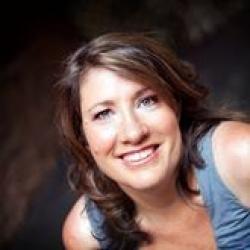
Lise St. Denis
Lise is a research scientist at Earth Lab responsible for the Global Social Sensing Project, a research initiative to develop datasets Earth scale related to the societal impact and societal disruption of natural hazard events for use in Earth Sciences, natural hazards research, and for real-time response applications.
Lise has a multidisciplinary background in computer science, data science, human-centered design, crisis informatics, emergency response, and natural hazards research. She holds degrees in Computer Science, Human-centered computing and brings over a decade of industry software design and development experience to her academic research role.
Her doctoral research focused on the challenges of integrating social media into formal emergency response and as part of this research participated in over forty emergency response activations with the Virtual Operational Support Team (VOST) community. Her current research extends that knowledge into the Earth Analytics domain, finding new methods for capturing information related to emergency response and societal impacts at scale for use in Earth sciences and natural hazards research. Related work includes development of the ICS-209-PLUS dataset: a geo-spatial, research grade dataset combining daily snapshots of incident response, hazard characteristics and societal impacts. Design of a neural net classifier for organizing social media for emergency response and natural hazards research.
In her free time, Lise loves using her art and design skills, spending time with family and hiking in Boulder County open space with her dogs.
- Alia Valdovinos ( RECCS cohort 2025 )
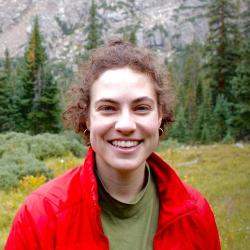
Sarah Elizabeth Stockman
Sarah is currently a research assistant with the Suding lab in the Ecology and Evolutionary Biology department. After receiving her associates at Houston Community College, she completed her bachelors at Wellesley College where she majored in the biological sciences. She studies plant communities under global change and the relationship between biodiversity and ecosystem function.
- Kayla Foster ( RECCS cohort 2024 )
- Anton Rybakin ( RECCS cohort 2025 )
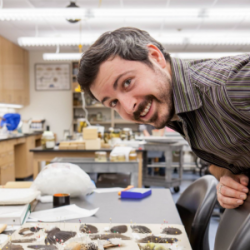
Scott Taylor
Assistant Professor, Ecology and Evolutionary Biology; INSTAAR/Niwot LTER
Research interests: Hybridization, speciation, evolutionary ecology, and population genomics (primarily of birds). His research applies genomics and field experiments to natural hybrid zones and closely related taxa in order to investigate the architecture of reproductive isolation—the hallmark of speciation—and the genetic bases of traits relevant to speciation.
- Vanessa Arnold ( RECCS cohort 2019 )
- Sebastian Chavez-Ortega ( RECCS cohort 2025 )
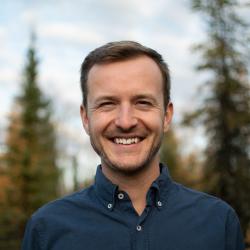
Liam Toney
Liam Toney is a research geologist with the USGS Landslide Hazards Program (LHP) in Golden, CO. Liam has a PhD in geophysics from the University of Alaska Fairbanks. He studies landslides using seismic waves in the Earth and acoustic waves in the atmosphere. Liam is joined by co-mentors Kate Allstadt and Elaine Collins. Kate is a supervisory research geophysicist at the LHP and is a leader in the field of landslide seismology. Elaine is a geophysicist with the LHP with a wide skillset who works on a number of landslide characterization problems.
- Natalie Aguilera ( RECCS cohort 2025 )
